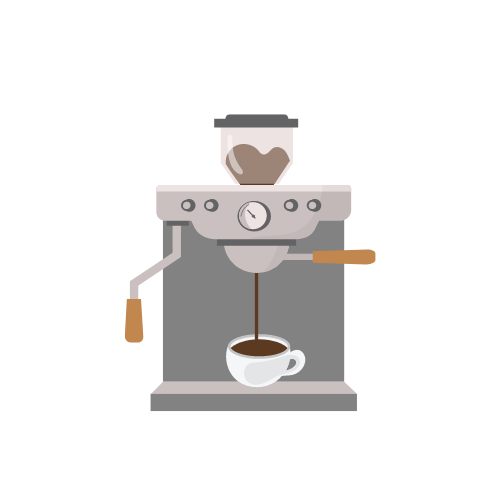Single-serve coffee pods have revolutionized the way we brew coffee, offering convenience and speed. However, their environmental impact has raised significant concerns, as billions of plastic and aluminum pods end up in landfills each year.
Biodegradable coffee pods provide an eco-friendly alternative, combining the ease of single-serve brewing with sustainable materials that break down naturally.
Here’s everything you need to know about biodegradable coffee pods and how they are reshaping the coffee industry.
What Are Biodegradable Coffee Pods?
Biodegradable coffee pods are designed to decompose naturally without leaving harmful residues. Unlike traditional plastic or aluminum pods, these eco-friendly alternatives are made from plant-based or bio-based materials such as:
- Starch
- Glucose
- Vegetable fibers
- Coffee chaff
- Inorganic fillers
These materials ensure that the pods break down into organic matter under appropriate conditions, such as in industrial composting facilities or even home compost setups, depending on the product.
Benefits of Biodegradable Coffee Pods
1. Environmental Impact
Biodegradable pods significantly reduce plastic waste. For instance:
- Compostable Pods: Many brands, like San Francisco Bay Coffee’s OneCUP™, offer pods that decompose within 84 days in commercial composting facilities, leaving no microplastics behind
- Zero-Waste Solutions: Brands like UrthPact focus on eliminating single-use plastics entirely by crafting pods from renewable resources
2. Convenience Without Guilt
Biodegradable pods maintain the convenience of single-serve brewing while addressing sustainability concerns. For example:
- Mississippi Mud Coffee Pods are nitrogen-flushed for freshness and fully compostable, offering pour-over quality with zero waste
- Tripod Coffee’s compostable Nespresso-compatible pods make recycling effortless while supporting reforestation efforts through partnerships with non-profits
3. Compatibility
Many biodegradable pods are compatible with popular brewing systems:
- Nespresso-compatible options (e.g., Tripod Coffee, Pact Coffee)
- K-Cup-compatible brands like GloryBrew and San Francisco Bay Coffee
4. Enhanced Flavor
Biodegradable materials often preserve the natural oils and flavors of coffee better than traditional plastic or aluminum pods. For instance:
- Mississippi Mud Pods contain up to 40% more coffee than standard pods for a richer taste
- GloryBrew offers a variety of roasts with vibrant flavors certified by the Rainforest Alliance
How Do Biodegradable Pods Work?
Biodegradable coffee pods are engineered to break down under specific conditions:
- Industrial Composting: Most brands, such as San Francisco Bay Coffee and UrthPact, recommend industrial composting facilities where heat, moisture, and oxygen levels are optimized for decomposition
- Home Composting: Some pods can decompose in home compost piles, but this varies by brand. Always check for certifications like BPI (Biodegradable Products Institute) to confirm suitability.
Top Brands Offering Biodegradable Coffee Pods
Here’s a look at some leading brands and their standout features:
| Brand | Key Features | Compatibility |
|---|---|---|
| San Francisco Bay Coffee | Plant-based materials; decomposes in 84 days; compatible with K-Cup brewers | K-Cup brewers |
| Tripod Coffee | Nespresso-compatible; supports reforestation; Australian-certified compostable | Nespresso machines |
| UrthPact | Customizable solutions for brands; eliminates single-use plastics | Various systems |
| Mississippi Mud | Nitrogen-flushed; pour-over quality; fully compostable | K-Cup brewers |
| GloryBrew | BPI-certified; bio-based materials; multiple roast options | K-Cup brewers |
Challenges and Considerations
While biodegradable coffee pods are a step toward sustainability, there are a few challenges to consider:
- Composting Requirements: Many biodegradable pods require industrial composting facilities to break down effectively. Home composting may not always suffice unless explicitly stated by the manufacturer
- Cost Premium: Biodegradable options often come at a higher price than traditional plastic or aluminum pods due to their sustainable materials and certifications.
- Limited Compatibility: Some eco-friendly pod designs may not work with all brewing machines (e.g., Keurig’s new “K-Rounds” require specific Keurig Alta brewers)
How to Choose the Right Biodegradable Pod
When selecting biodegradable coffee pods, consider the following:
- Certifications: Look for BPI or ASTM D6400 certifications to ensure the pod meets compostability standards.
- Material Transparency: Opt for brands that clearly state their materials (e.g., plant-based fibers, coffee chaff).
- Brewing Compatibility: Ensure the pod is compatible with your coffee machine.
- Flavor Preferences: Many brands offer a variety of blends and roasts to suit different tastes.
The Future of Sustainable Brewing
The rise of biodegradable coffee pods reflects a growing demand for sustainable brewing solutions. Companies like Keurig are even developing entirely plant-based pod systems (e.g., “K-Rounds”) alongside new machines designed specifically for eco-friendly brewing


Leave a Reply